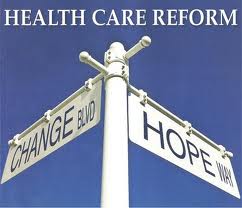Charging by disease

To charge according to different types of diseases, which is the latest effort by the central government to make healthcare bills cheaper for patients, will hopefully save money for patients if reasonable ceilings can be set for the prices of different kinds of diseases.
The National Development and Reform Commission and the Ministry of Health jointly issued a document this week, requiring that public hospitals charge patients depending on the disease. A list of 104 types of diseases has been provided for hospitals to consult in implementing the reform.
Such a reform, which will be carried out on a trial basis, is described as an important measure for reform of the healthcare pricing mechanism and conducive to the reasonable control of healthcare costs. It should effectively reduce the increasingly heavy burden of healthcare costs on patients.
Theoretically speaking, such a charging mechanism will considerably restrict the room for over-medication ranging from unnecessary medical checks and tests to prescription of excessive or unnecessary medicines.
However, the prerequisite to ensure that patients receive proper treatment is that the ceiling charges for a particular disease must be within a reasonable range.
A too high ceiling will not only fail to cut healthcare expenses for patients, it will also waste medical resources. A too low ceiling will leave little room for doctors to have treatment options, which is essential as patients react differently to different therapies and medicines.
A too low price ceiling for a particular kind of diseases will also likely reduce a hospital's revenue and thus the income of doctors and nurses. The central and local governments must make sure that government financial support will make up for lost profits.
Another prerequisite is that the incomes of medical workers should not be linked with the number of patients they treat and the amount of medicines they prescribe. Under-medication is another tendency that must be guarded against in carrying out this reform. With relatively fixed charges for different diseases, reducing their costs is another way for hospitals to increase their revenue. Skipping necessary checks or tests or not prescribing enough medicines would then be a tempting way for some medical institutions to make profits.
That would mean a cheaper medical bill but poorer healthcare service, the last thing both the initiators of the reform and patients want to see.
So the document requires that a supervision and appraisal mechanism be established over this new charging system along with a mechanism to award those who provide a good service and punish those who do a bad job.
Hopefully, this reform will indeed benefit patients.
 0
0 






